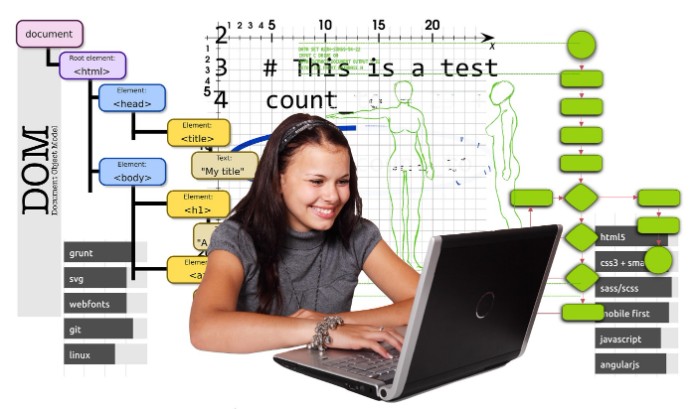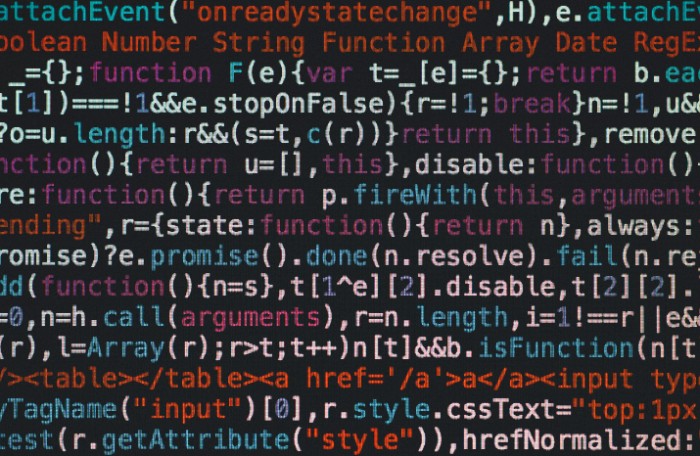So you want to learn how to code? HTML is a great place to start! It’s relatively easy to learn, and you can use it to create beautiful and dynamic websites. But how long does it take to learn HTML? That depends on how much time you put into it. But don’t worry; we’re here to help! In this blog post, we’ll give you a step-by-step guide on how to learn HTML in record time!
What Is HTML And What Does It Do
HTML, or Hypertext Markup Language, is used to create web pages. It is written as HTML elements consisting of start tags, end tags, and empty elements. The following sections will explain each component in more detail.
HTML documents have two parts: the head and the body. The head includes information about the document, such as the title, and can also contain CSS and JavaScript code. In contrast, the body includes the document’s content, such as text, images, and hyperlinks.
To create an HTML document, you will need a text editor. Many different text editors are available, both for free and for purchase. Some popular ones include Microsoft Word, Notepad++, and Adobe Dreamweaver. Once you have chosen a text editor, you can begin coding your HTML document by using one of the following methods:
- Use an existing HTML file as a template
- Begin coding from scratch
- Use an online WYSIWYG editor
- Use a CSS (Cascading Style Sheet) framework such as Bootstrap or Foundation
- Use an online code generator (such as Clogo2html)
Whichever method you choose, save your file with a .html extension to be appropriately recognized as an HTML document.
Read More: How Long Does It Take To Learn SQL?
Why You Should Learn HTML

Many believe learning HTML is no longer necessary since website builders and content management systems make it easy to create a website without writing code. However, there are several reasons why learning HTML can be beneficial.
First, understanding HTML can help you troubleshoot problems with your website more easily. Viewing the code can give you a better idea of where the problem lies if something goes wrong during web development.
In addition, knowing HTML can give you more control over the appearance of your website. With a basic understanding of HTML, you can create custom styles and layouts that are impossible with most website builders.
Read More: How To Learn Java With No Programming Experience
Step-By-Step Guide On How To Learn HTML
Learn Basics
If you want to learn HTML, the first thing you need to do is learn the basics. HTML is a code language used to create websites. It stands for HyperText Markup Language. The code is made up of sets of elements, which are used to create the structure and content of a web page. To start coding in HTML, you must understand how these elements work. Once you understand HTML and other programming languages, you can learn more advanced coding techniques. There are many resources available online that can help you learn HTML. You can also find plenty of books on the subject.
Learn About HTML Tags
HTML tags are the basic building blocks of every web page. They structure your content and tell web browsers how to display it. There are different HTML tags, each with its specific purpose. HTML tags include the following:
The first type of HTML tag is the head tag. Head tags specify information about the document that isn’t displayed on the web page itself. This can include the document’s title, author, keywords, and metadata. The head tag is placed at the beginning of the document before the body tag.
The second type of HTML tag is the body tag. Body tags contain all the content that is displayed on the web page. This includes text, images, videos, and interactive elements like forms and hyperlinks. The body tag is placed after the head tag in an HTML document.
The third type of HTML tag is the paragraph tag. Paragraph tags are used to group related pieces of content, such as a text section or bullet points list. Paragraph tags are usually placed within body tags.
The fourth type of HTML tag is the heading tag. Heading tags are used to denote different levels of importance within a piece of text. There are six heading tags, ranging from h1 (the most important) to h6 (the least important). Heading tags are usually placed within body tags.
Read More: How Long Does It Take To Learn Java?
Learn How To Use Attributes

In HTML, an attribute is a piece of information assigned to an element. Attributes are typically used to provide additional information about an element or to control how the element behaves. For example, the src attribute is used to specify the URL of an image, while the href attribute is used to specify the URL of a link.
There are two ways to specify attributes in HTML: with a start tag or a standalone attribute. Start tags enclose an element and always include the element’s name and attributes. A tag does not enclose standalone attributes; they only include the attribute’s name and value. In most cases, it is more convenient to use start tags, as they provide better readability and easier editing. However, there are some situations where standalone attributes may be preferable.
Practice
Practice makes perfect, they say, and this holds when learning HTML. It can be tempting to read about HTML code or watch tutorials online, but to learn how to code in HTML indeed truly; you need to get your hands on the deck and start practicing. Only by writing code and seeing how it affects the output on a web page will you start to develop a feel for the language. And as with anything else, the more you practice, the better you will become at coding in HTML. So set aside some time each day to sit down and write some HTML code. Before you know it, you’ll be an expert in no time.
Gain Experience

The best way to learn is by gaining experience. There are a few ways to do this. First, find a web page that interests you and view the source code. This will give you a better understanding of how HTML works. Second, try creating your web page using a simple text editor. Start by including essential elements like headings and paragraphs. Once you get the hang of it, you can add more complex elements like lists and tables. Finally, don’t be afraid to experiment. If something doesn’t work the way you want it to, try changing the code and see what happens. The only way to learn HTML is by playing with it and seeing what works.
Stay Up-to-Date
HTML is the foundation of the internet, so it’s crucial to stay up-to-date with the latest version. The benefits of using the latest version include increased security, new features, and improved compatibility. To stay up-to-date, you need to be proactive about learning HTML. There are several ways to do this, including taking an online course, reading blog posts and articles, and practising coding. With a little effort, you can easily Stay Up-to-Date with the latest HTML developments.
Read More: How Long Does It Take To Learn C++?
Conclusion
So how long does it take to learn HTML? That depends on how much time and effort you will put into learning the language. However, if you practice regularly, stay up-to-date, and gain experience, you can become an expert in no time. So whether you’re a beginner or an experienced coder, learning HTML is well within your reach. So don’t wait any longer – start coding today!
